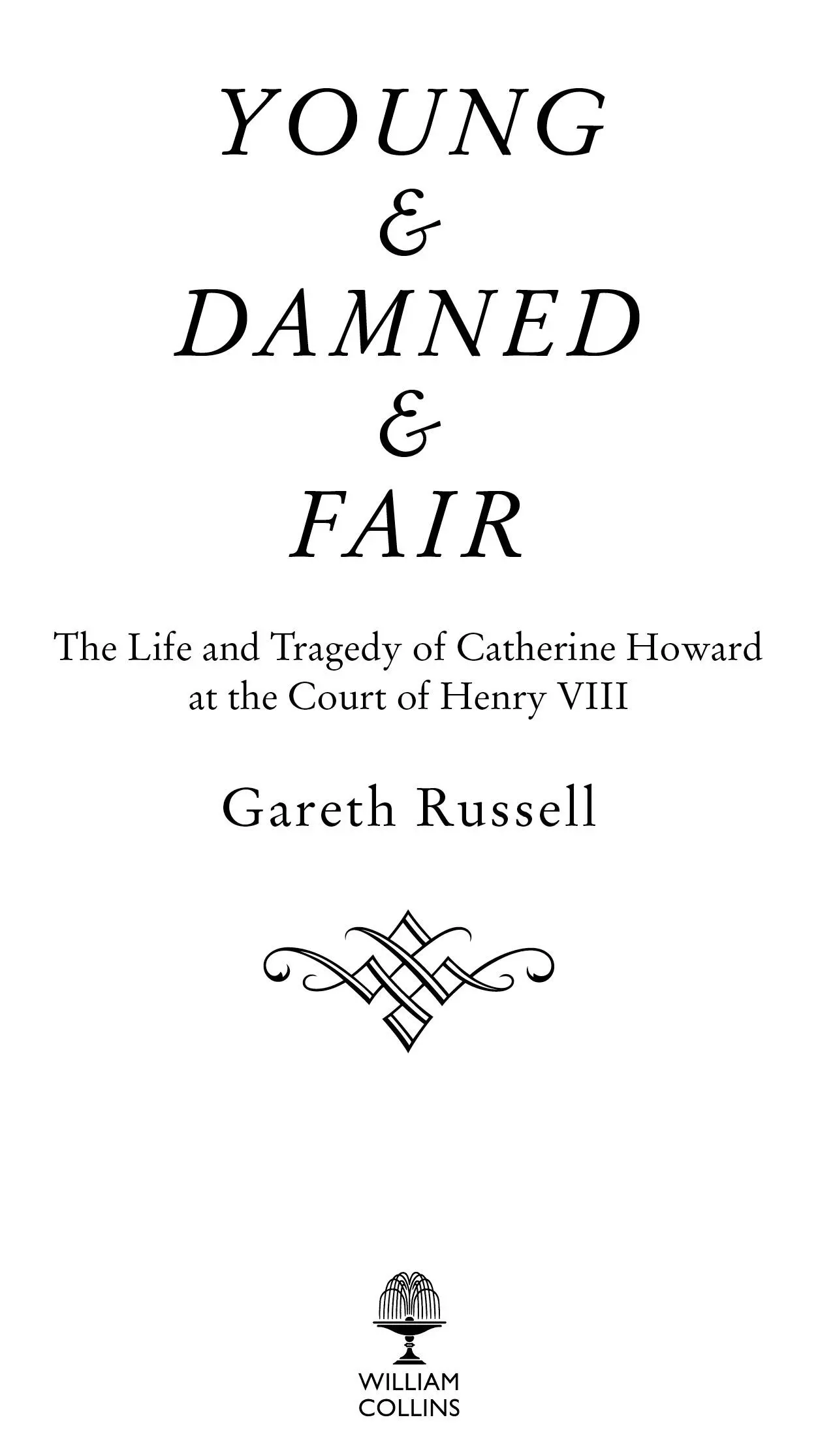
William Collins
An imprint of HarperCollins Publishers
1 London Bridge Street
London SE1 9GF
www.WilliamCollinsBooks.com
This eBook first published in Great Britain by William Collins in 2017
Copyright © Gareth Russell 2017
Maps and family trees by Martin Brown
Extract from Die Lorelei from Collected Poems and Drawings by Stevie Smith, London, Faber and Faber Ltd, 2015. Kind permission granted by the publishers.
Cover image shows ‘Portrait of a Young Woman, 1540–45, oil on wood’, Holbein, Hans the Younger (1497–1543). New York, Metropolitan Museum of Art. The Jules Bache Collection, 1949 (49.7.30) © 2016 The Metropolitan Museum of Art/Art Resource/Scala, Florence.
Gareth Russell asserts the moral right to be identified as the author of this work
A catalogue record for this book is available from the British Library
All rights reserved under International and Pan-American Copyright Conventions. By payment of the required fees, you have been granted the non-exclusive, non-transferable right to access and read the text of this e-book on-screen. No part of this text may be reproduced, transmitted, down-loaded, decompiled, reverse engineered, or stored in or introduced into any information storage and retrieval system, in any form or by any means, whether electronic or mechanical, now known or hereinafter invented, without the express written permission of HarperCollins.
Source ISBN: 9780008128289
Ebook Edition © January 2017 ISBN: 9780008128296
Version: 2017-12-06
For my grandparents,
Robert and Mary Russell
and
Richard and Iris Mahaffy
An antique story comes to me
And fills me with anxiety,
I wonder why I fear so much
What surely has no modern touch?
… There, on a rock majestical,
A girl with smile equivocal
Painted, young and damned and fair
Sits and combs her yellow hair.
– Stevie Smith, Die Lorelei
Cover
Title Page
Copyright
Dedication
Epigraph
Maps
Family Trees
Introduction
1. The Hour of Our Death
2. Our Fathers in Their Generation
3. Lord Edmund’s Daughter
4. The Howards of Horsham
5. Mad Wenches
6. The King’s Highness Did Cast a Fantasy
7. The Charms of Catherine Howard
8. The Queen of Britain Will Not Forget
9. All These Ladies and My Whole Kingdom
10. The Queen’s Brothers
11. The Return of Francis Dereham
12. Jewels
13. Lent
14. For They Will Look Upon You
15. The Errands of Morris and Webb
16. The Girl in the Silver Dress
17. The Chase
18. Waiting for the King of Scots
19. Being Examined by My Lord of Canterbury
20. A Greater Abomination
21. The King Has Changed His Love into Hatred
22. Ars Moriendi
23. The Shade of Persephone
Appendix I: The Alleged Portraits of Catherine Howard
Appendix II: The Ladies of Catherine Howard’s Household
Appendix III: The Fall of Catherine Howard
Acknowledgements
List of Illustrations
Picture Section
Bibliography
Notes
Index
About the Author
By the Same Author
About the Publisher
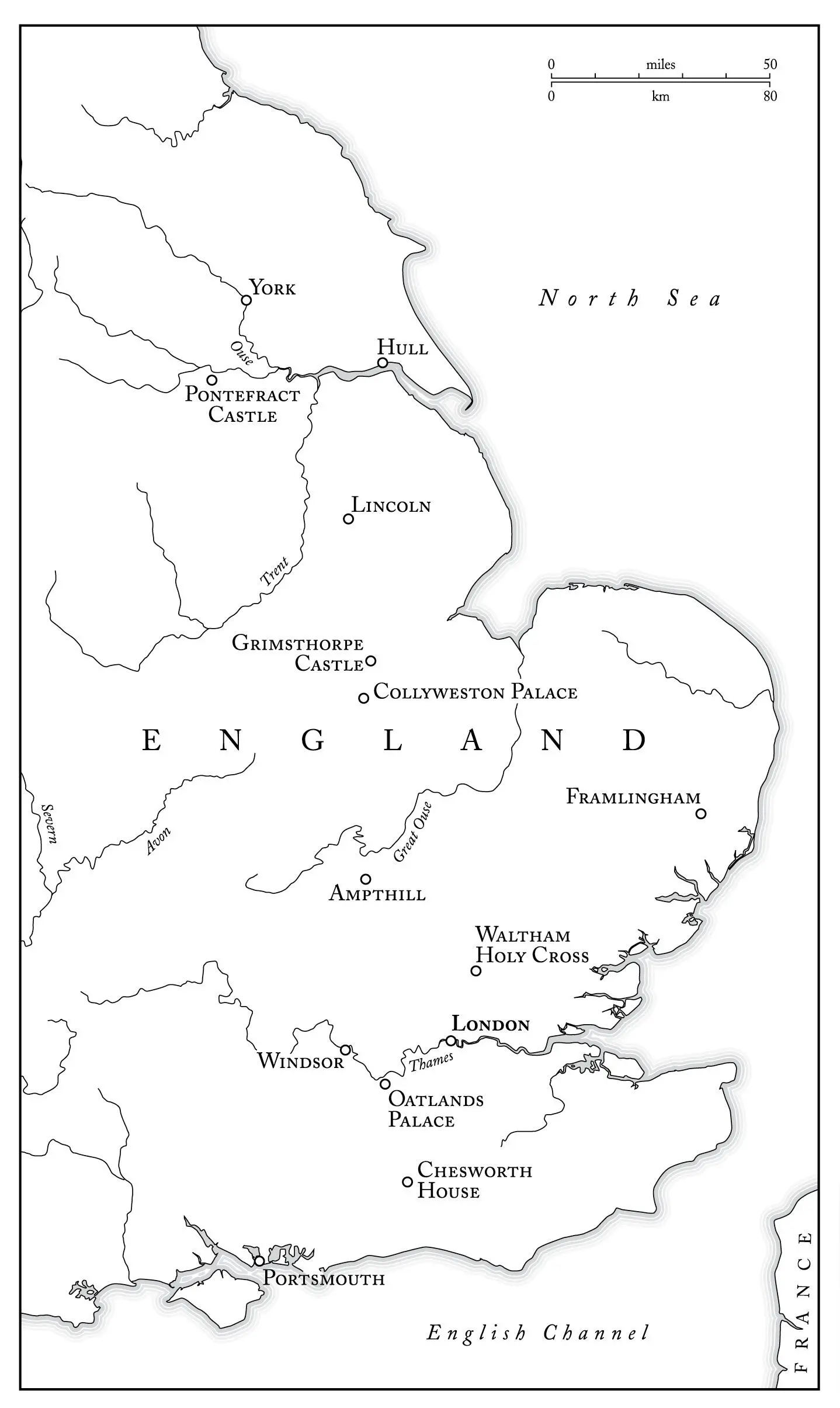

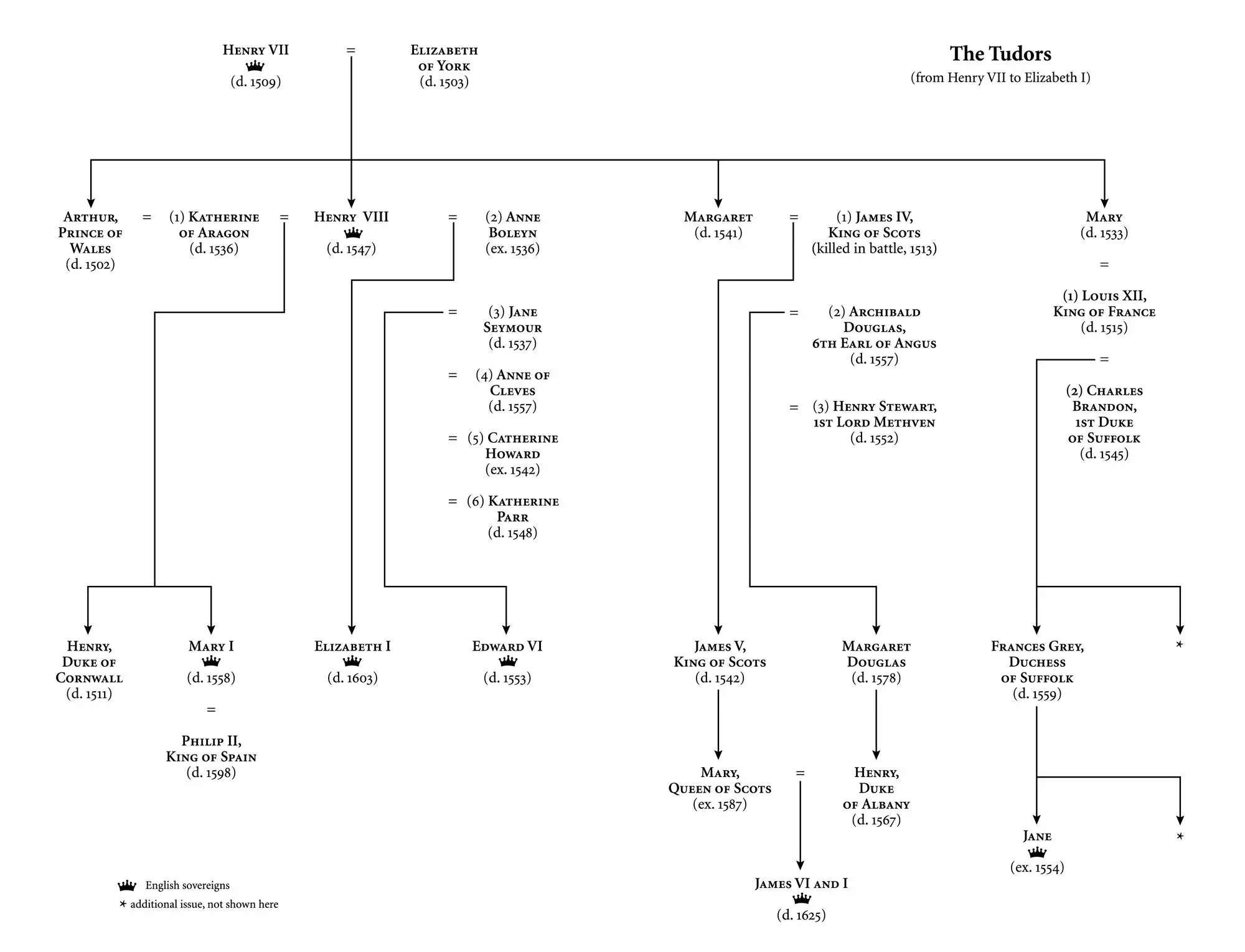
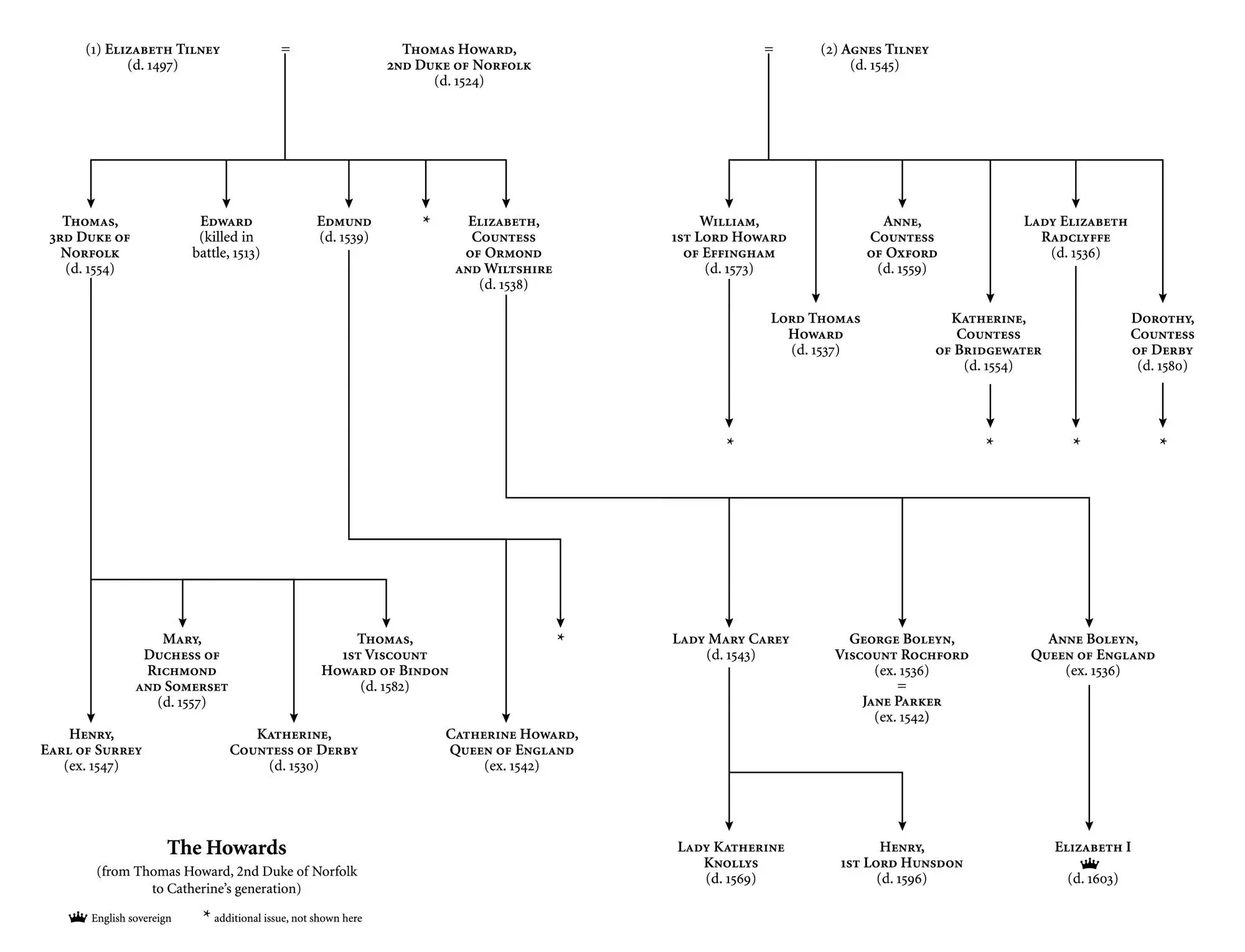
In the Great Hall at Hampton Court Palace, magnificent tapestries depicting scenes from the life of the patriarch Abraham are on display. Every day, hundreds of tourists pass these enormous works of art which cost Henry VIII almost as much as the construction of a new warship. After centuries of exposure, their colours had faded and the bright sparkle of the threads of beaten gold had worn away, until a lengthy conservation project carried out between the Historic Royal Palaces, the Clothworkers’ Company, and the University of Manchester offered a reconstruction and an academic paper conveying just how vibrant the tapestries would have been when they were first unveiled. Their detail is extraordinary, mesmeric. The reflections of mallard ducks floating on the ponds are visible, reeds sway in the wind, every face is detailed, sandals and toenails are stitched perfectly, bread in a servant’s basket is believably coloured. Crucially, part of the conservation work necessitated turning the tapestries over to look at the threads at the back and see all the ugly, confusing stitch-work that had gone into making the familiar scene on the front possible.
My interest in the story of Henry VIII’s fifth wife, Queen Catherine Howard, began years ago and solidified in 2011 when, under the supervision of Dr James Davis at Queen’s University, Belfast, I completed my postgraduate dissertation on her household.1 As with all Henry’s wives, Catherine’s life had been written about many times in biographies and studies of her husband’s reign. In the year of Henry VIII’s death, an Italian merchant remarked, ‘The discourse of these wives is a wonderful history’, an observation that captures why the Tudors remain one of England’s most famous dynasties.2 In Catherine’s case, the circumstances of her career had already been dissected in A Tudor Tragedy: The Life and Times of Catherine Howard , first published in New York in 1961 and generally judged the standard biography of her. Written by Professor Lacey Baldwin Smith, the central contention of A Tudor Tragedy was that Catherine’s ‘career begins and ends with the Howards, a clan whose predatory instincts for self-aggrandisement, sense of pompous conceit, and dangerous meddling in the destinies of state, shaped the course of her tragedy.’3
I intended to use Catherine’s sixteen-month period as queen consort as a useful framing device to analyse the queen’s household, one of the least-studied but most fascinating components of Henry VIII’s court: how it functioned, who populated it, who dominated it, how it was financed, and how it interacted with the wider court.4 The thesis would place one early modern queen of England, in this case the hapless Catherine Howard, in the context of a life lived not just next to the great men of the early English Reformation but amongst the servants, ladies-in-waiting, and favourites, without whom no great aristocratic lady could function and from whom she was seldom, if ever, separated. I did not, initially, expect to find anything remarkably different about her rise and fall.
Instead, I came to the conclusion that the queen’s household had shaped the trajectory of Catherine’s career. Popular culture often presents Tudor royal households, particularly a queen’s, as beautiful irrelevances. Sumptuously dressed ladies-in-waiting whispering behind their fans, dancing or throwing coy glances, are familiar images of life in the queens’ establishments. In many works of fiction, these characters seem to spend a good deal of their time giggling over something which is not credibly amusing. The reality was far more interesting.
Читать дальше
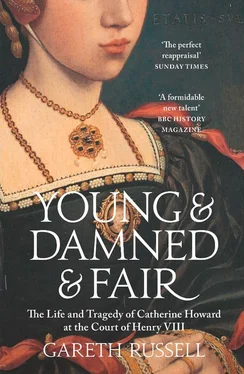















![John Bruce - The Lettsomian Lectures on Diseases and Disorders of the Heart and Arteries in Middle and Advanced Life [1900-1901]](/books/749387/john-bruce-the-lettsomian-lectures-on-diseases-and-disorders-of-the-heart-and-arteries-in-middle-and-advanced-life-1900-1901-thumb.webp)
